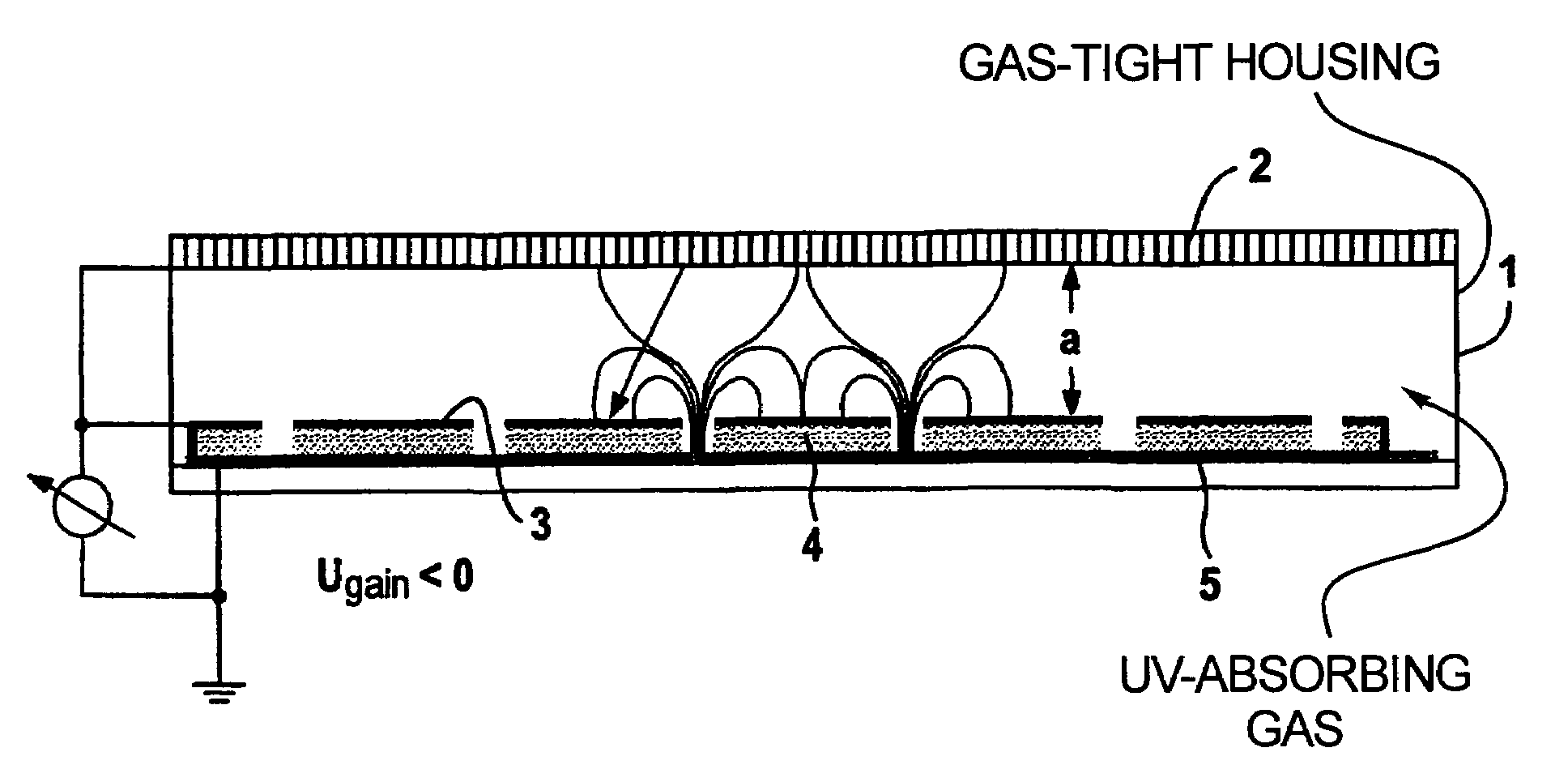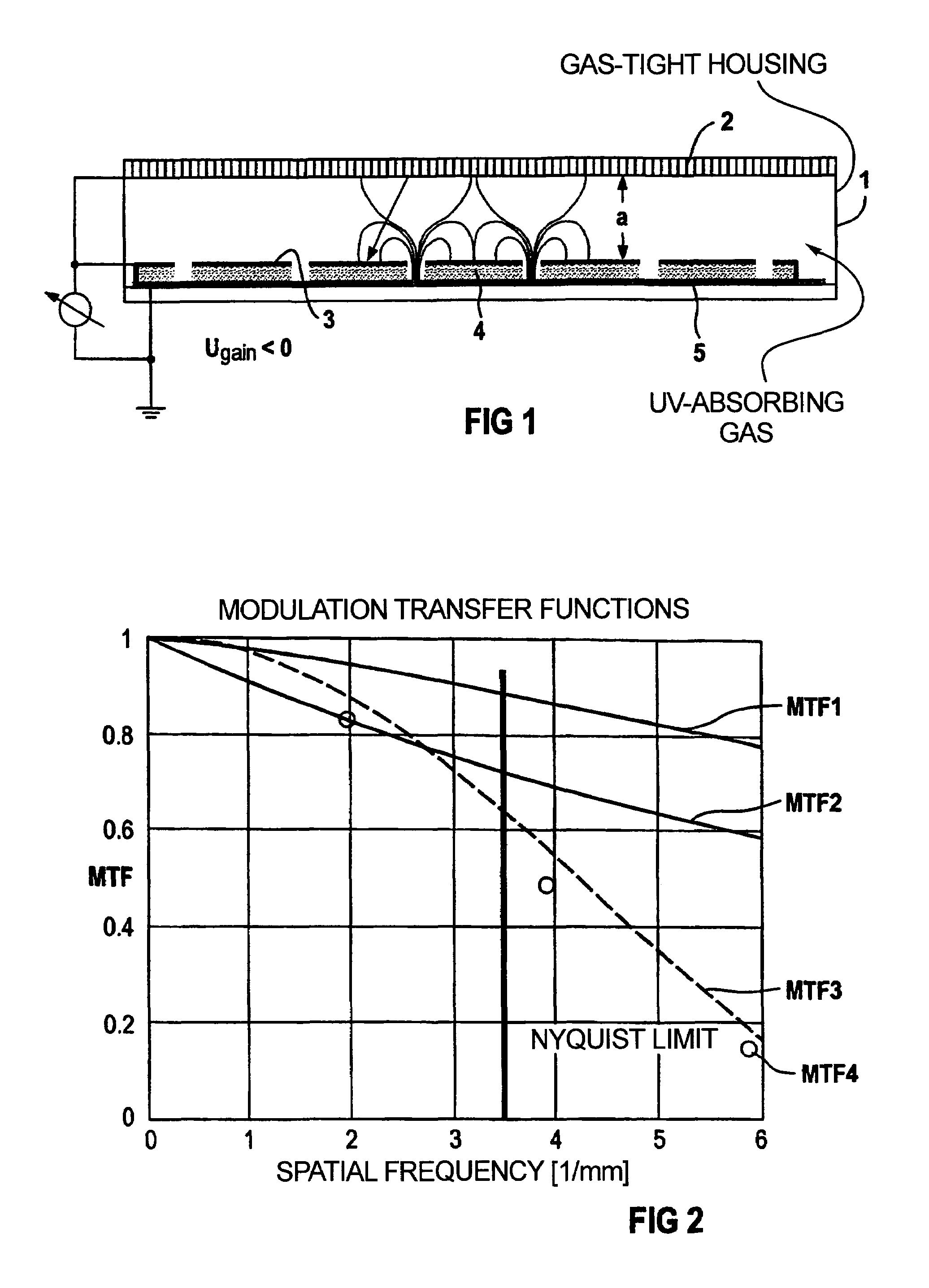Radiation converter
a radiation converter and converter technology, applied in the field of radiation converters, can solve the problems of poor image representation capability, flat panel image detectors, and small distance between signal levels and noise signals, and achieve the effect of improving the dynamic range of such a radiation converter
- Summary
- Abstract
- Description
- Claims
- Application Information
AI Technical Summary
Benefits of technology
Problems solved by technology
Method used
Image
Examples
Embodiment Construction
[0023]The radiation converter shown in FIG. 1 has a gas-tight housing 1 with a radiation absorber 2, which converts radiation into light photons. The radiation absorber 2 is either embodied as a separate part or arranged outside the housing 1 in the region of a first side. The radiation absorber 2 is composed of a scintillator material, preferably CsI:Na in a needle structure, the needles being directed in the direction of a photocathode 3.
[0024]The photocathode 3 is arranged at a distance a of about 50 μm away from the radiation absorber 2 and is formed as a layer, preferably produced from copper, on a perforated polyimide film 4. The polyimide film 4 acts as an electron multiplier and is applied to an electron detector 5. The electron detector 5 preferably has a pixel structure and converts the impinging electrons into electrical signals which can be derived by means of suitable known measures, for example an electrical line, and which enable an image representation on a display d...
PUM
 Login to View More
Login to View More Abstract
Description
Claims
Application Information
 Login to View More
Login to View More - R&D
- Intellectual Property
- Life Sciences
- Materials
- Tech Scout
- Unparalleled Data Quality
- Higher Quality Content
- 60% Fewer Hallucinations
Browse by: Latest US Patents, China's latest patents, Technical Efficacy Thesaurus, Application Domain, Technology Topic, Popular Technical Reports.
© 2025 PatSnap. All rights reserved.Legal|Privacy policy|Modern Slavery Act Transparency Statement|Sitemap|About US| Contact US: help@patsnap.com


